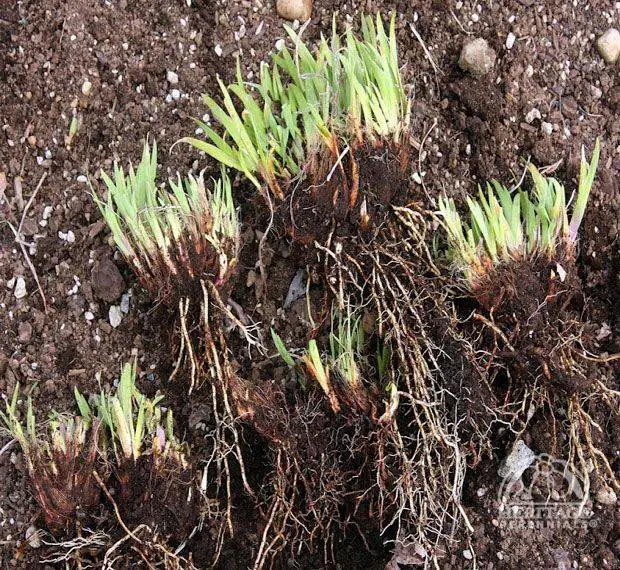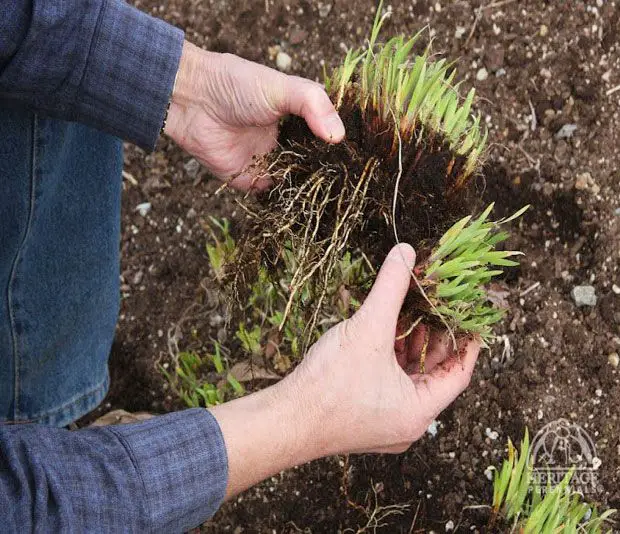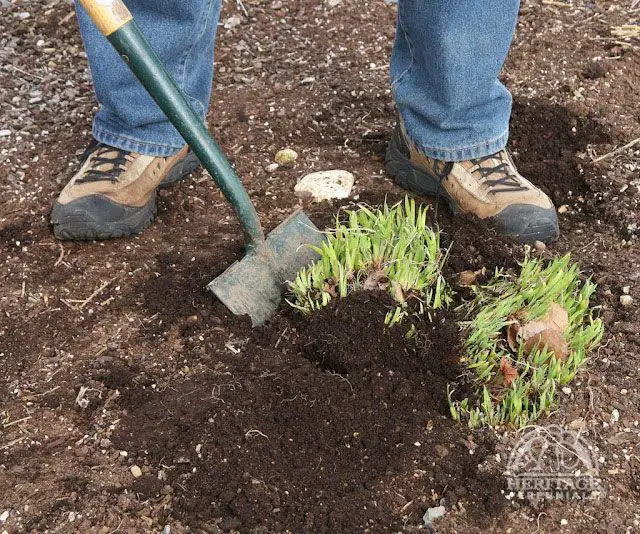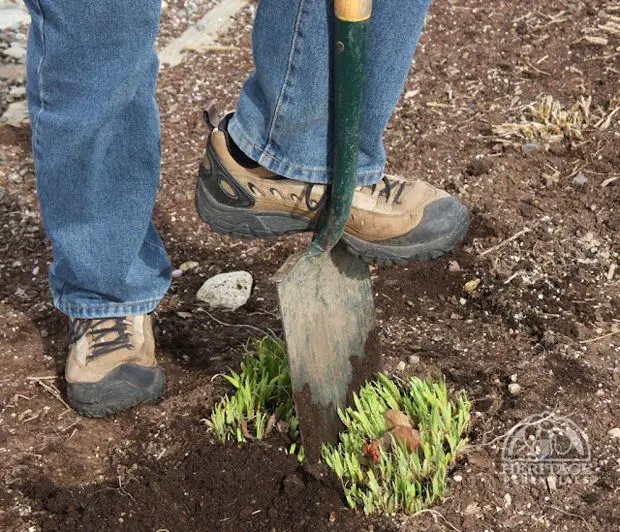Dividing Perennials in the Spring
Perennials 101, Seasonal Activities through the Year
One of the most rewarding aspects of perennial gardening is the fact that most plants actually increase in size over the years. After a time, some of your perennials are going to benefit from being divided, and in most cases spring is a terrific time to go about this task.
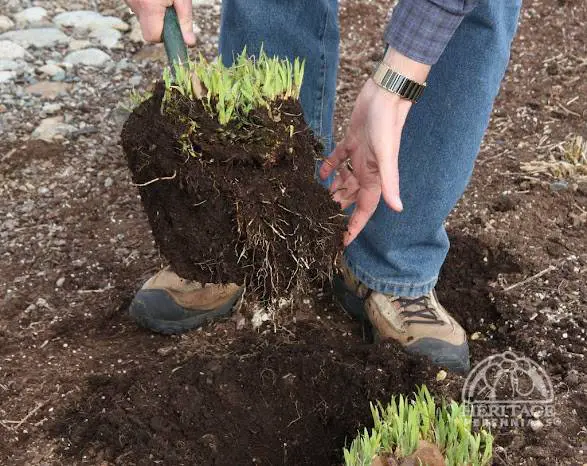
We divide perennials for a number of reasons:
1. Clumps have started to die out in the middle. The classic “doughnut” shape with an empty hole in the center is a sure sign that a perennial clump needs attention.
2. Flowering performance has declined. The clump may have become congested, or the roots old and woody.
3. Soil nutrients have been exhausted around the clump. Signs of this might be stunted growth, yellowish leaves or lack of bloom. Dividing and moving to a new location is a wise idea. Sometimes simply fertilizing the plant will make it smarten up.
4. Perennial weeds have infested the clumps. When this happens, usually the best approach is to dig up the entire clump and divide it, picking out every single piece of weed root that can be found.
5. We want to make more of our favourites. Dividing established clumps can provide plenty of new plants for a new garden bed, or to share with friends and neighbours.
What to divide in spring?
One rule of thumb for division is this: perennials that flower between early spring and mid June are best divided in early fall. Perennials that flower after mid June are best divided in the spring.
This rule is one that many gardeners break with regularity, experiencing relatively few problems. I don’t like to see spring-flowering perennials divided while they are blooming, but doing it immediately afterwards often works just fine. Primroses, for instance, can be dug up and divided into numerous piece in late spring, giving them an entire season to recover before flowering again the following year. Same thing with many of the spring-flowering rock garden plants, such as Rock Cress (Aubrieta), Basket-of-Gold (Aurinia) and Moss Phlox (Phlox subulata).
Summer and fall-flowering perennials have the whole spring and early summer to recover from being divided, and most will give you an excellent flower display the same year. Spring is the very best time for dividing most ornamental grasses, and especially the fall-flowering types such as Maiden Grass (Miscanthus) and Fountain Grass (Pennisetum).
Three plants that I prefer to see divided at other times are Peonies (fall only), Oriental Poppies (in July or August when they are dormant) and true Lilies (mid to late fall). Daylilies (Hemerocallis), on the other hand, can be divided at nearly any time, but spring seems to suit them perfectly.
Traditionally, the time for dividing Bearded Iris is shortly after flowering, in July or early August. But if you have stubborn clumps that refuse to flower, then you might as well go ahead and divide them in the spring, since they likely won’t bloom this year anyhow.
How to Divide
For beginning gardeners, the first time or two you divide perennials you are going to be nervous and unsure of what you’re doing. This is normal! But once you see the results, you’ll start to realize that most often plants will recover quickly and be all the better for the experience. Even seasoned gardens get carried away at times by dividing plants into pieces that are too small, and the results are sometimes mixed — some pieces grow well, some die. We usually still end up with more plants than we started with, so consider it a success.
The basic steps of dividing are simple. Once your plant shows signs of growth in the spring (an inch or two of new shoots is fine), dig up the entire clump. Try to be generous and get as many thick roots as possible. I like to dig about 4 inches or so beyond where the shoots arise. A narrow and long spade (called a rabbiting spade) is a handy tool for this, especially in a closely planted border. Dig all the way around, then pry the clump out of the ground. Put down a tarp somewhere handy, and transport your clump there.
Pick up the clump and drop it a few times, to try and knock off any loose soil. Some gardeners will actually blast off the soil with a strong jet of water. Then, go and find a knife… I’m using an old kitchen bread knife these days for larger clumps, but a paring knife, steak knife or special garden knife will do just fine. Look closely at your clump, sort of parting the shoots in an attempt to find a natural point where the clump can be easily separated. If there is no such point, then just be brave and cut directly down the center with your knife, from top to bottom. Once it’s split in two, then look at each half to see if there is a sensible spot to cut yet again, then split these each into two. Depending on how large the clump was, you can keep going if you like. Try and keep the sections generally of a good size, say the diameter of your fist or larger. Each piece should have both green above-ground shoots as well as roots below.
Remember, unless you’re starting a nursery you probably don’t need 20 divisions of anything! The best and most vigorous pieces are usually those found towards the outside of the original clump. The roots are less woody and can recover more quickly, giving you strong and healthy new plants. Discard old and woody roots from the middle (add them to the compost pile).
Certain perennials when dug from the ground will almost fall apart into pieces. Others will need a lot more effort to split. A few kinds (like Miscanthus) may actually require an axe or hatchet to get out of the ground and then chop into smaller sections.
Once your dividing task is complete it’s time to replant the pieces. Try to plant them at approximately the same depth they were growing. Water them in well at planting time, then maybe once a week for the first month unless spring rains are generous.
One last idea
If you have loads of extra divisions, consider potting up a few of them for donations to your local Horticultural Society spring plant sale. Be sure to label them at potting time. These also make terrific and inexpensive gifts when visiting other gardeners.
— John Valleau, Corporate Horticulturist
Below are some books which contain lots of good information on gardening with perennials.
